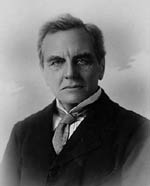Geodia gibberosa, comonly known as the white encrusting sponge, is a species of sea sponge found in the Caribbean. It is eaten by hawksbill turtles. It was first described by Lamarck in 1815.

Geodia is a genus of sea sponge belonging to the family Geodiidae. It is the type genus of its taxonomic family.

Tetillidae is a family of marine sponges. Tetillids are more or less spherical sponges which are found commonly in all marine habitats at all depths throughout the world. They are especially common in sedimented habitats. Over a hundred species have been described in ten genera.
Stelletta is a genus of sea sponges belonging to the family Ancorinidae.

Cliona is a genus of demosponges in the family Clionaidae. It contains about eighty described species.

Ancorinidae is a family of marine sponges belonging to the order of Tetractinellida.
Geodia exigua is a species of sponge that produces the sesquiterpene spiro compound exiguamide. The species was first described by Johannes Thiele in 1898. It is a marine organism known from Japan.
Thrombidae is a family of sea sponges.
Thrombus is a genus of sea sponge belonging to the family Thrombidae.

Cinachyrella is a genus of marine sponges in the family Tetillidae.

Geodia barretti is a massive deep-sea sponge species found in the boreal waters of the North Atlantic Ocean, and is fairly common on the coasts of Norway and Sweden. It is a dominant species in boreal sponge grounds. Supported by morphology and molecular data, this species is classified in the family Geodiidae.
Geodia composita is a species of sponge in the family Geodiidae. The species was first described by Bösraug in 1913. It is found off the coasts of Mozambique.

Tetractinellida is an order of sea sponges. First described in 1876, this order received a new description in 2012 and replaced the two orders Astrophorida and Spirophorida, which then became sub-orders as Astrophorina and Spirophorina.
Geodia agassizi is a species of sponge in the family Geodiidae. The species is found in the eastern tropical Pacific Ocean and was first described by Robert Lendenfeld in 1910.
Geodia alba is a species of sponge in the family Geodiidae. The species is found in the waters of Indonesia and was first described by Oswald Kieschnick in 1896 as Synops alba.

Geodia megastrella is a species of sponge in the family Geodiidae. It is found in the waters of the North Atlantic Ocean. The species was first described by Henry John Carter in 1876.
Geodia atlantica is a species of sponge in the family Geodiidae. It is found in the waters of the North Atlantic Ocean.
Geodia anceps is a species of sponge in the family Geodiidae. The species is found in the western part of the Mediterranean Sea and was first described by Gualtherus Carel Jacob Vosmaer in 1894 as Synops anceps.
Geodia arripiens is a species of sponge in the family Geodiidae. It is found in the waters of the South China Sea. The species was first described by Nils Gustaf Lindgren in 1897.






